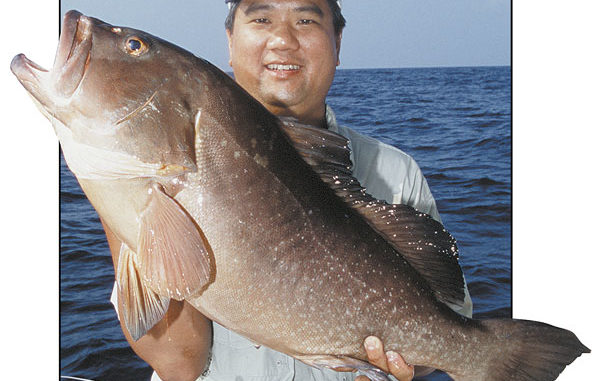
With seasons finally open, Morehead City bottomfishing is back in style
With bottomfish seasons open — finally — North Carolina anglers who fish out of Morehead City will find some of the best action. So many reefs, ledges and wrecks are such an easy boat ride out of port that it can be hard to pick a hard-bottom destination.Two top anglers target a variety of the area’s bottomfish with unconventional rigs. Anthony Ng has been getting to the bottom of the grouper action for more than 30 years, using a 2-hook bottom rig he calls a “hi-lo” rig, but also using super-sized Carolina rig. Ray Massengill uses a rig that saves hardware and hugs the bottom tightly.
“The hi-lo is my top grouper rig,” Ng said. “Different fishermen tie it different ways and call it different things. But mine is the result of decades of experience.”
Otherwise known as a “2-hook” or “grouper” rig, Ng’s hi-lo is tied with a 3-way swivel for the “hi” dropper, which trails two feet of leader to the top hook and four feet of leader down to a second 3-way swivel. The second hook is tied to the 3-foot “lo” dropper from the second 3-way swivel. The sinker is tied to the remaining swivel eye with six inches of 50-pound leader. The rest of the rig is tied with 100- to 125-pound mono and 8/0 or 9/0 circle hooks.
“I tie 130-pound braid to the top swivel with a double-improved clinch knot,” he said. “My hi-lo rig prevents the hooks from becoming tangled because of the varying leader lengths between hooks and swivels. If you’re untangling leaders, you aren’t catching fish.”
Using lighter mono for the sinker connection allows it to break more easily than the rest of the leader. If the sinker hangs, it breaks free, leaving the rest of the hi-lo rig intact. Ng uses frozen cigar minnows for bait, but also uses chunks of trash fish once he begins fishing.
“Any cut bait will work,” he said. “Just make sure the hook penetrates bone so the bait will stay on the hook. You drop it to the bottom, and little fish tear into it, and the bigger fish snatch it. When little fish bite, it’s rapid-fire like a machine gun. If that stops, either a grouper has chased the little fish away and is ready to snap it up, or you’re out of bait.”
Ng operates Fish-Ng Accessories, which manufactures Precision Auto Reels. Of course, he prefers electric-assist reels for bottom-fishing, and electric reels paired with circle-hook rigs require special tactics.
“You can’t jerk the rod to set a circle hook,” he said. “When you feel the fish take the bait you push the button to tighten the line and you hope he hasn’t gone into a hole. I use my starting battery to power my electric reel because I’m constantly running the engine so it stays charged. But I also have backup batteries.”
Ng said many anglers buy a portable battery booster costing about $60. It is a dry cell, self-contained battery with built-in charger and powers approximately 24 hours of fishing.
“You run the reel off the battery booster, then charge it when you get back home,” he said. “You can put it in your trunk in case your car battery goes dead.”
Grouper live in rock formations and wrecks. When they strike, they often head under an overhang and hang up everything: hook, line and sinker.
“If a fish gets hung up, first give him some slack to see if he will swim out,” he said. “If that doesn’t work, tighten the line and strum it like a guitar string. If that doesn’t work, wrap the line around a gaff or dehooker handle, or a wrap towel around your hand and pull the line; it will either pull free or break. Braided line can cut your hands so you must protect them.”
When landing a fish, Ng usually grabs the leader to haul it aboard, but when landing a big grouper, he may use a gaff.
“Before gaffing any bottomfish, make sure it’s a legal fish,” he said. “If it’s not, you have to dehook it and release it. You are required to have a dehooker onboard.”
When bottomfish are caught in deep water, they suffer the fish’s version of the bends — gas-bloating that endangers its survival. Fishermen should carry venting devices to relieve gas pressure before releasing fish that is not legal to retain.
“If a fish comes off the hook near the surface, it can still become gas-bloated,” Ng said, “so you should always watch for floating fish. You might have a legal fish floating nearby or you might see a fish that needs venting so it can return to the bottom.”
Ng has many favorite ledges and wrecks, but he said every good fisherman finds his own special spots.
“Any of the ledges in 80 feet of water or more, out 20 to 25 miles, are good places,” he said. “Rock South of 13, West Rock, 210 Rock, 240 Rock, 1700 Rock and East Rock are good spots. Wrecks I like to fish include the Atlas Tanker and Shad Boat.”
Ng said these areas are known by most fishermen, so it takes only time and fuel to find them. But better fishing occurs at smaller ledges in the vicinities of the popular hotspots.
“When you’re running from place to place, if bait pops up, slow down and check for bottomfish,” he said. “Fish that are deep come to the surface and vice versa. Any place that attracts baitfish stacks them up. Any spot that attracts amberjack and king mackerel also holds grouper. Look with your depthfinder for fuzzy patches that indicate baitfish and larger individual marks that are grouper. Anything could be down there — gag, scamp and red grouper, grunts, vermilion snapper, porgies, ringtails, sharks, amberjack, octopus and lionfish.”
Ng said drifting above a ledge with a chart plotter before fishing shows the direction of the drift induced by combined effects of wind and current. Then, the angler has only to estimate how far to reverse course before dropping anchor.
“You learn that only with experience,” he said. “After the first few hundred times, it gets easy.”
Ng uses a 45-pound anchor with 35 feet of 5/16ths-inch chain. He lets it hit bottom and pays out 15 to 20 feet of line. The short line-length limits boat swing. Too much swing can make it difficult to stay on top of a small ledge for effective fishing.
Massengill fishes the same ledges and wrecks as Ng, but he also likes fishing Aeolus wreck in the 210/240 Rock area, the 195 Rock and a small livebottom area 12 miles southwest of Beaufort Inlet.
“You can fish that small livebottom area on the way out,” he said. “The 195 Rock is just 18 miles out. If I haven’t found the fish, I head for the Aeolus/210/240 Rock area, which forms triangle of excellent structure.”
Like Ng, Massengill searches for small ledges away from main structure coordinates. He said the more identifiable high-relief structure attracts heavy fishing pressure.
“You want to find your own little ledges,” he said. “On a calm day in the shallower waters I fish, I can see a 1- or 2-foot drop on my depthfinder.”
For example, Massengill said, the 195 Rock is in 50 feet of water and rises a foot or two. He can mark slight dips in the bottom marked with his sonar, but only if he takes wave action into account — and that takes some experience.
“Some places may be sandy, others may have limestone,” he said. “A good ledge in a low-relief area can even disappear. Storms and currents might cover a ledge you once found, but they can also uncover new ledges you couldn’t find before. Always look for new ledges in any area that has been productive.”
Massengill catches gag grouper while targeting sea bass and grunts at the nearshore ledges. While fishing for bottomfish, he also targets pelagic species.
“Shad (menhaden) are so plentiful, you should fill your livewell with them on the way out,” he said. “They make great bottomfish bait, whether live or cut into chunks. While I’m grouper fishing, I set a light line for king mackerel and rig a rod with a jig for cobia. A cobia might attracted to a propeller turning slowly in the current or to a hooked fish.”
For sea bass, Massengill prefers drift fishing. When he anchors, grouper and grunts, which are attracted to baits rising and falling, chase away the sea bass.
“If I’m sea-bass fishing, I use a spinning or revolving spool reel with 80-pound braid,” he said. “I use a 2-hook bottom rig with the top dropper a 12- to 15-inch leader tied to a 3-way swivel. The second dropper is an arm’s length lower and is actually the tag end of the surgeon’s loop I use to tie on the sinker. It saves a 3-way swivel and allows the hook rest right on the bottom. We catch lots of big flounder with that low hook. I use 4/0 circle hooks. Even when I head farther offshore, I catch beeliners (vermillion snapper) and triggerfish with those same hooks. I’ve caught just about any bottomfish that swims with that rig.” n
Mike Marsh is a freelance outdoor writer from Wilmington. His new book, Fishing North Carolina, features 100 rivers, lakes, sounds, beaches and piers. It is available at www.mikemarshoutdoors.com.

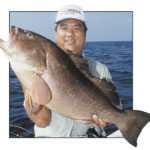
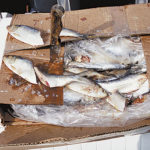
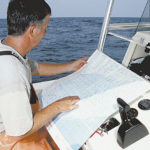
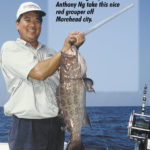




Be the first to comment